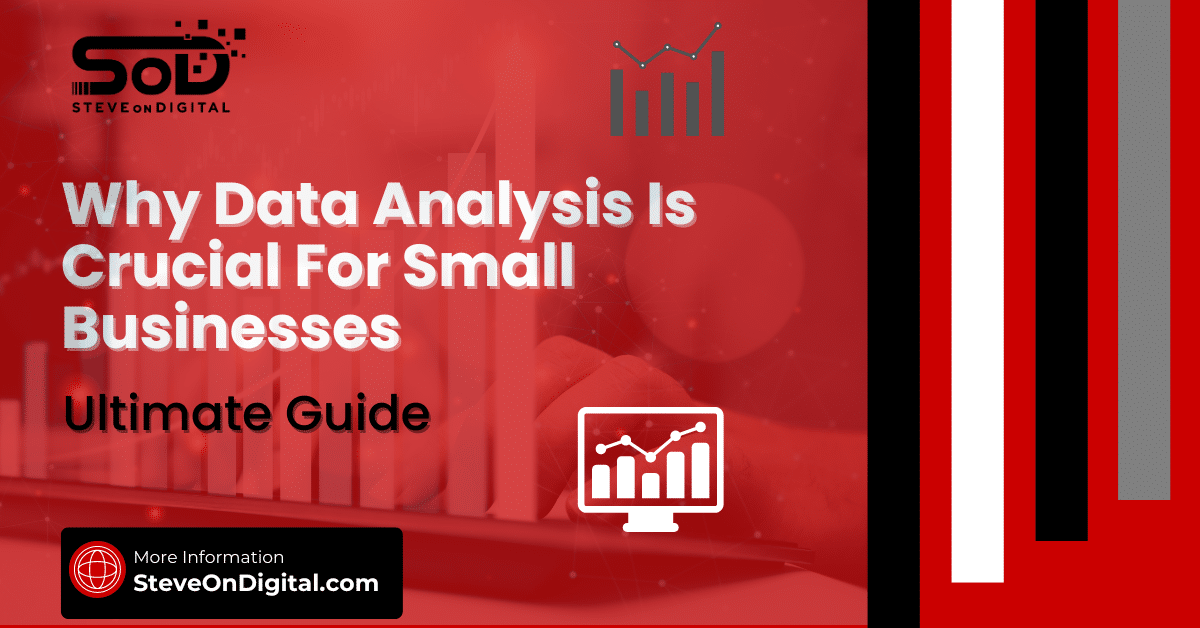To do digital marketing for a small business, start by identifying your target audience. Focus on understanding their needs and preferences through market research. Use this data to tailor your digital marketing strategy, ensuring you reach the right people effectively.
Digital marketing is essential for small businesses today. It helps build a strong online presence, connects with customers, and drives sales. By leveraging content marketing, social media platforms, and data-driven insights, you can compete with larger companies without needing a massive budget.
I’m Steve, a digital transformation expert with a strong background in electrical engineering, an MBA, and a master’s in Project Management. I excel at helping SMEs navigate the digital landscape with practical insights. Let’s begin!
Understanding Your Target Audience
Knowing who you’re talking to is the cornerstone of any successful digital marketing strategy. When I first started, I made the mistake of trying to appeal to everyone. It didn’t take long to realize that understanding my specific target audience was the key to making my marketing efforts effective.
Conducting Market Research
Market research is the first step in identifying your target audience. It involves digging deep into the demographics, behaviors, and preferences of your potential customers. I use tools like Google Analytics and Facebook Insights to gather data on who’s visiting my website and engaging with my content. For small businesses, this step is critical because it helps you focus your resources on the people most likely to convert into paying customers.
Creating Customer Personas
Once I gathered enough data, I created detailed customer personas—profiles representing different segments of my audience. These personas include details like age, gender, income level, interests, and buying habits. By visualizing who my ideal customers are, I can tailor my marketing messages to resonate with them more effectively. For instance, when targeting young entrepreneurs, I emphasize innovative digital marketing techniques and tools that save time and money.
Analyzing Customer Behavior
Understanding how your customers behave online is just as important as knowing who they are. I frequently analyze data to see which pages they visit most, what content they engage with, and how they navigate through my website. This helps me tweak my digital marketing efforts to better align with their needs and preferences. Tools like heat maps and user session recordings are invaluable for gaining insights into customer interactions.
Building a Strong Online Presence
A strong online presence is the foundation of successful digital marketing. When potential customers search for products or services online, you want your business to be front and center. For small businesses, building this presence is all about creating a professional website, optimizing for search engines, and maintaining consistent branding across all digital channels.
Developing a Professional Website
Your website is often the first point of contact with potential customers, so it needs to make a good impression. I invested in a user-friendly, mobile-responsive, and SEO-optimized website that not only looks professional but also performs well on search engines. Did you know that 53% of mobile users abandon sites that take longer than three seconds to load? That’s why having a fast, responsive site is crucial.
Optimizing for Local SEO
For small businesses, local SEO is a game-changer. By optimizing my site for local searches, I’ve seen a significant increase in foot traffic to my physical store. Claiming and optimizing my Google Business Profile was one of the best decisions I made. It boosted my visibility in local search results and helped me connect with customers in my community.
Creating Consistent Branding
Consistency is key when it comes to branding. I made sure that my brand’s voice, colors, and messaging are consistent across all digital channels. This not only makes my business more recognizable but also builds trust with my audience. Whether it’s my website, social media profiles, or email campaigns, everything aligns with my brand identity.
Social Media Marketing for Small Businesses
Social media has become an indispensable tool for connecting with customers. When I first started using social media for my business, I was amazed at how quickly I could engage with my audience and drive traffic to my website. Social media platforms are not just for sharing updates; they’re powerful marketing channels that can help you grow your business.
Choosing the Right Social Media Channels
Not all social media platforms are created equal, and choosing the right ones can make a big difference in your digital marketing success. I focus on platforms where my target audience spends most of their time. For example, I found that Instagram and Facebook are particularly effective for reaching small business owners and entrepreneurs. By focusing my efforts on these platforms, I’ve been able to build a strong, engaged community around my brand.
Creating Engaging Social Media Content
Content is king, especially on social media. I’ve learned that the key to successful social media marketing is creating content that resonates with my audience. Whether it’s a blog post, a video, or a simple update, I make sure it’s relevant, informative, and engaging. For instance, posting user-generated content, like photos and testimonials from satisfied customers, has significantly boosted my engagement rates.
Utilizing User-Generated Content
One of the most effective strategies I’ve used is leveraging user-generated content. Encouraging satisfied customers to share their experiences with my products has helped build trust and credibility. This type of content not only provides social proof but also helps me connect with my audience on a more personal level. According to a recent study, 79% of people say user-generated content highly impacts their purchasing decisions.
Content Marketing Strategy
Content marketing is one of the most effective ways to drive traffic, engage your audience, and improve search engine rankings. From my experience, it’s not just about pushing out content—it’s about creating something that resonates with your audience and keeps them coming back for more. When done right, content marketing can be a game-changer for small businesses looking to establish a strong online presence.
Creating Relevant Content
When I first started, I struggled to figure out what content would best engage my audience. It took some trial and error, but I learned that the key is to create content that aligns with your audience’s interests and needs. I often begin by conducting keyword research to identify what my target audience is searching for. By focusing on these topics, I can ensure my content is not only relevant but also optimized for search engines. According to recent studies, businesses that blog regularly generate 67% more leads than those that don’t.
Creating content that answers common questions, provides value, and addresses pain points has helped me build trust with my audience. Whether it’s a detailed how-to guide, an insightful blog post, or a simple list of tips, the content needs to be useful and actionable.
Utilizing Video Content
Video content has become increasingly important in digital marketing, especially for small businesses. I’ve found that incorporating videos into my content marketing strategy significantly boosts engagement. Video allows me to convey complex ideas more effectively and connect with my audience on a more personal level.
For example, I’ve started creating short, informative videos that complement my blog posts. These videos often get more shares and comments than text alone, driving more traffic to my website. Did you know that video content is expected to account for 82% of all consumer internet traffic by 2025? This statistic alone shows the growing importance of video in content marketing.
Blogging And Article Writing
Maintaining a blog has been one of the most effective ways to keep my audience engaged and improve my site’s SEO. Regular blogging helps establish authority in my niche and provides a steady stream of fresh content for search engines to index. In fact, businesses that blog experience a 55% increase in website traffic compared to those that don’t.
I focus on creating articles that are not only informative but also optimized for relevant keywords. This strategy has helped me attract more organic traffic and retain customers by providing them with valuable information that addresses their specific needs.
Email Marketing for Small Businesses
Email marketing remains one of the most effective tools for nurturing relationships and retaining customers. In my experience, it offers a direct line of communication with your audience, allowing you to deliver personalized content right to their inbox.
Building an Email List
Building an email list from scratch can be challenging, but it’s worth the effort. I’ve used a variety of strategies to grow my email list, including offering free resources, hosting webinars, and providing exclusive discounts to subscribers. One of the most effective tactics has been creating a simple sign-up form on my website and promoting it across my social media platforms. According to HubSpot, email marketing has an average ROI of 3800%, making it a must-have strategy for small businesses.
Crafting Effective Email Campaigns
Writing compelling email content that drives conversions is an art. I’ve learned to keep my emails concise, personalized, and focused on a single call to action. Whether it’s promoting a new product, sharing a blog post, or offering a discount, each email is crafted with the reader in mind. Personalization has been key—I use my customers’ names, reference their past interactions, and tailor the content to their specific interests.
Using Email Marketing Tools
To streamline my email marketing efforts, I rely on various email marketing tools. These tools help me automate campaigns, segment my audience, and analyze performance. Some of the tools I use include Mailchimp and Constant Contact, which offer customizable templates and detailed analytics. Using these tools has allowed me to scale my efforts without sacrificing personalization.
Search Engine Optimization (SEO) Basics
SEO is critical for improving your website’s visibility on search engines and driving organic traffic. It’s one of the first things I focused on when I launched my site, and it’s paid off tremendously.
Keyword Research and Implementation
Keyword research is the foundation of effective SEO. I start by identifying relevant keywords that my target audience is searching for. Tools like Google Keyword Planner and Ahrefs have been invaluable in this process. Once I have a list of keywords, I strategically incorporate them into my website’s content, page titles, meta descriptions, and headers. This helps search engines understand the relevance of my site, improving its chances of ranking higher in search results.
On-Page SEO Techniques
On-page SEO involves optimizing individual pages to improve their visibility in search engines. I focus on several key elements, including page titles, meta descriptions, header tags, and internal linking. By ensuring that each page is optimized, I can enhance its search engine ranking and drive more organic traffic. Another critical aspect is ensuring my website is mobile-responsive—Google’s mobile-first indexing means that a mobile-friendly site is essential for ranking well.
Off-Page SEO Strategies
Off-page SEO is just as important as on-page optimization. I’ve focused on building high-quality backlinks from reputable websites, which signals to search engines that my site is trustworthy and authoritative. Social sharing, guest blogging, and engaging with influencers in my industry have also helped improve my site’s off-page SEO.
Pay-Per-Click (PPC) Advertising
PPC advertising is a powerful tool for driving targeted traffic to your website. It’s particularly effective for small businesses looking to get quick results without waiting for organic SEO efforts to take effect.
Setting Up PPC Ads
Setting up a PPC campaign involves choosing the right platform, selecting the appropriate keywords, and creating compelling ad copy. I’ve found that starting with a small budget and gradually increasing it as I see results works best. Platforms like Google Ads and Facebook Ads offer robust targeting options, allowing me to reach potential customers based on their interests, location, and behavior.
Monitoring and Optimizing PPC Campaigns
Once my PPC campaigns are live, I continuously monitor their performance using tools like Google Analytics and the native platforms’ dashboards. This allows me to track key metrics such as click-through rates, conversion rates, and cost per conversion. By analyzing this data, I can make informed decisions to optimize my campaigns, ensuring I get the best return on investment.
Balancing PPC with Organic Efforts
While PPC is effective for immediate results, I’ve learned that it’s essential to balance it with long-term organic strategies. By integrating PPC with SEO, I can maximize my digital marketing efforts, driving both short-term and long-term success. For instance, using PPC to target high-converting keywords while focusing on SEO for broader, more competitive terms has been a winning combination.
Leveraging Data-Driven Insights
In today’s digital age, the ability to make informed decisions based on real-time data is invaluable. I’ve found that by leveraging data-driven insights, I can fine-tune my digital marketing strategies to achieve better results. Analytics tools have become my best friend, helping me understand what’s working and what needs improvement.
Using Google Analytics
Google Analytics is a powerful tool that I rely on to measure my website’s performance. Setting it up is straightforward, and it provides a wealth of information about my website traffic, including where visitors are coming from, what they’re doing on the site, and how long they’re staying. By regularly reviewing this data, I can identify which marketing campaigns are driving the most traffic and adjust my strategies accordingly.
For instance, if I notice that a particular blog post is generating a lot of organic traffic, I might create more content around that topic or update the post to include the latest information. Google Analytics also allows me to set up goals, such as form submissions or product purchases, and track conversions. This data is crucial in determining the ROI of my digital marketing efforts.
Tracking Customer Interactions
Understanding how customers interact with my digital content is key to improving their experience and increasing engagement. I use tools like heat maps and session recordings to see where users are clicking, how they navigate through my site, and where they might be dropping off. This insight helps me make informed decisions about website design, content placement, and call-to-action (CTA) effectiveness.
For example, if I notice that visitors are spending a lot of time on a particular page but not taking the desired action, I might tweak the CTA or simplify the page layout to guide them more effectively. Tracking customer interactions also allows me to personalize content based on user behavior, which can significantly improve engagement and conversion rates.
Adjusting Strategies Based on Data
One of the most valuable lessons I’ve learned is that flexibility is key in digital marketing. What works today might not work tomorrow, and the ability to pivot based on data is crucial. I regularly review my analytics data to spot trends, identify opportunities, and address challenges. For instance, if I see a dip in website traffic, I’ll investigate the cause—whether it’s a technical issue, a drop in search engine ranking, or a change in customer behavior—and adjust my strategy accordingly.
Making data-driven decisions has allowed me to optimize my marketing budget, focus on high-performing channels, and ultimately achieve better results. It’s an ongoing process, but one that’s essential for staying competitive in the ever-evolving digital landscape.
Influencer Marketing for Small Businesses
Influencer marketing has emerged as a powerful tool for small businesses looking to expand their reach and build credibility. I’ve had success collaborating with influencers who align with my brand values and target audience, and it’s been a game-changer for increasing brand awareness and driving sales.
Identifying the Right Influencers
Finding the right influencers to work with is crucial. I start by identifying individuals who have a strong following within my niche and whose audience matches my target market. It’s not just about the number of followers—engagement rates are a more important metric. I look for influencers who regularly interact with their audience and whose followers trust their recommendations.
I also consider the type of content they produce. For example, if I’m promoting a new product, I might partner with an influencer who excels at creating engaging video content. By aligning with the right influencers, I can reach a broader audience and gain the trust of potential customers who might not have heard of my brand otherwise.
Creating Mutually Beneficial Partnerships
When collaborating with influencers, it’s important to create partnerships that benefit both parties. I approach influencers with a clear proposal that outlines what I’m offering and what I’m expecting in return. This could include product samples, exclusive discounts for their followers, or a commission on sales generated through their promotion.
Transparency and clear communication are key to maintaining a positive relationship with influencers. I also ensure that the content they produce aligns with my brand messaging and values, which helps maintain authenticity and trust with their audience.
Measuring Influencer Marketing Success
To determine the effectiveness of an influencer marketing campaign, I track key metrics such as engagement rates, website traffic, and sales generated from the campaign. Tools like Google Analytics and social media insights provide valuable data on how the campaign is performing. For example, I can see how many visitors came to my website from an influencer’s post and whether those visitors converted into customers.
I also monitor the long-term impact of these campaigns. Sometimes, the value of influencer marketing goes beyond immediate sales—building brand awareness and credibility can lead to increased customer loyalty and word-of-mouth referrals over time.
Engaging with Existing and Potential Customers
Building and maintaining strong relationships with customers is at the heart of any successful business. In my experience, engaging with both existing and potential customers helps foster loyalty and encourages repeat business. It’s not just about making a sale—it’s about creating a community around your brand.
Encouraging Customer Feedback
Customer feedback is invaluable for understanding what’s working and what needs improvement. I actively encourage my customers to share their experiences, whether it’s through online reviews, surveys, or direct messages. Positive feedback helps build credibility, while constructive criticism provides insights into areas where I can improve.
I make it a point to respond to all feedback, whether positive or negative. Acknowledging customer feedback shows that I value their opinions and am committed to improving their experience. This approach has helped me build trust and loyalty with my customer base.
Implementing a Referral Program
Word-of-mouth is one of the most powerful forms of marketing, and a referral program can help harness this potential. I’ve implemented a referral program that rewards satisfied customers for bringing in new business. This not only incentivizes customers to spread the word but also helps attract new customers who are more likely to trust recommendations from friends or family.
The referral program is simple—I offer a discount or a free product for every new customer referred. This approach has helped me expand my customer base while rewarding loyal customers at the same time.
Hosting Local Events
In-person events are a great way to strengthen community ties and promote your business. I’ve hosted local events like workshops, product launches, and networking meetups to connect with customers and build relationships in the local market. These events provide an opportunity to showcase my products or services, gather feedback, and create a memorable experience for attendees.
Hosting events also helps increase brand visibility in the local community and can lead to increased word-of-mouth referrals. By engaging with customers face-to-face, I can build stronger relationships and foster a sense of community around my brand.
Final Thoughts
Digital marketing is a dynamic and ever-changing landscape, but by staying focused on the needs of your customers and leveraging data-driven insights, you can create effective strategies that drive results. From content marketing and SEO to influencer marketing and customer engagement, each aspect of digital marketing plays a crucial role in building a strong online presence and growing your small business.
Remember, it’s not about doing everything at once—it’s about finding what works for your business and continuously refining your approach based on data and feedback. By keeping the customer at the center of your digital marketing efforts, you can build lasting relationships, increase brand loyalty, and achieve long-term success.




